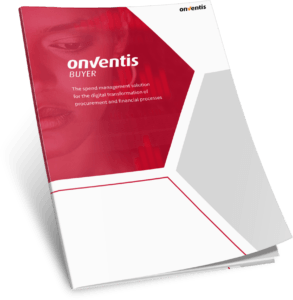Skills Shortage in Social Work & The Role of Procurement for Non-Profits
The need for more professionals in the social sector is more than just a challenge for organizations, including non-profits. It is a system-wide problem that profoundly impacts the quality of care and support provided to those in need. These facilities, crucial for our society, constantly create added value for residents and those requiring care. But what happens when the pillars crumble?

Skills Shortage in Social Work & The Role of Procurement for Non-Profits
The need for more professionals in the social sector is more than just a challenge for organizations, including non-profits. It is a system-wide problem that profoundly impacts the quality of care and support provided to those in need. These facilities, crucial for our society, constantly create added value for residents and those requiring care. But what happens when the pillars crumble?
Procurement Challenges and Opportunities for Non-Profits in the Social Sector
The daily tasks in social institutions, particularly non-profits, are complex and demanding, from direct care to complex administration. But with increasing demands and a simultaneous rise in the number of people needing help, employees in non-profits are under increasing pressure. Overwork and quality impairments are becoming the new norm. A study by the Institute for Employment Research (IAB) predicts that the social sector will grow to become the largest economic sector by 2040, driven by demographic trends. This underscores the importance for non-profit social organizations to tackle the shortage of resources and skilled workers efficiently, where procurement plays a critical role.
Challenges: Procurement For Non-Profit Social Organizations
For non-profits in the social sector, procurement often takes a backseat due to their primary focus on providing assistance and distributing resources to those in need. However, a shortage of specialists in the social sector leads to weak procurement departments, presenting significant challenges:
- Budget: Social institutions focus on helping their clients and residents. The budgets available are often limited, so these funds must be used as efficiently as possible. For this reason, cost-cutting measures and cost reductions are necessary in many areas.
- High, recurring needs: The ongoing care of those in need continuously requires services and consumables. The focus here is on indirect purchasing to ensure the organization’s sustainable existence. It is necessary to procure products and services daily, often at short notice, to guarantee an uninterrupted supply.
- Maverick buying: Due to the constant demand, the need for continuous supply, and the shortage of skilled workers, the employees of the facilities often take over the ordering process themselves. This means that they order independently and often immediately when needed, usually without comprehensive price comparisons, framework agreements, or checking the suppliers beforehand. This practice, known as maverick buying, leads to uncontrolled orders that disregard compliance requirements and increase costs. The lack of effective approval procedures encourages maverick buying, resulting in compliance issues and bad purchases.
- Workload in accounts payable: Due to the budgets set by local authorities and cities, social institutions must present their expenditure transparently and clearly. This expenditure often also has to be checked by auditors. This obligation to document presents accounts payable accountants with the challenge of recording and processing all invoices and associated expenses. The phenomenon of maverick buying makes this task even more difficult: “wild” purchase orders are often delivered with invoices that are not easy for accountants to process. The lack of order references and detailed information complicates the invoice processing process and slows down work considerably.
- Exacerbated by the shortage of skilled labor in the social sector: The lack of qualified professionals further exacerbates these problems. The uncontrolled and inefficient procurement processes lead to an increased workload that the existing staff often need help to handle. This vicious circle leads to an even more significant shortage of skilled workers and worsens the situation.
Overcoming Procurement Challenges In Non-Profits
Procurement for non-profits in the social sector often takes a backseat due to their primary focus on providing assistance and distributing resources to those in need. However, a shortage of specialists in the social sector leads to weak procurement departments, presenting significant challenges:
- Mobile procurement: The introduction of Mobile Procurement enables procurement processes to be simplified and accelerated and offers the opportunity to integrate automated approval processes seamlessly. This means that employees are free to place orders within predefined catalogs containing only vetted and approved suppliers. At the same time, the automated approval processes ensure that each order goes through the necessary approval stages before it is executed. Thanks to this technological integration, employees can place orders independently and flexibly via mobile devices without circumventing the company’s guidelines.
- Reducing the maverick buying rate: Implementing automated approval processes can significantly reduce uncontrolled procurement. This lowers costs and ensures that orders are only placed with selected suppliers, volume discounts are used, and compliance standards are adhered to, significantly reducing the maverick buying rate and costs.
- Cost reduction: Digitization automates many manual and time-consuming tasks. For example, automatically processing orders and invoices can significantly reduce administrative work. This increase in efficiency not only reduces the workload of employees but also lowers the costs of administrative operations. This saves them time, which they can use for strategic tasks instead, thus ensuring the organization’s success. In addition, higher productivity means that fewer resources are needed for the same amount of work, which translates directly into cost savings.
- Security of supply: Another important aspect is ensuring the continuous supply of goods and services. The digitalization of purchasing and cooperation with reliable suppliers ensures that the required materials and services are always available on time without any worries about supply bottlenecks.
- Spend analytics for transparency in purchasing: AI-supported purchasing systems enable detailed analysis and expenditure monitoring. This creates unprecedented transparency in purchasing and ensures that an overview of expenditure is preserved. Such analyses can be used to identify potential savings and continuously improve the efficiency of procurement.
E-procurement: A Game-Changer for Non-Profits
Investing in procurement is crucial for non-profits, not just for efficiency but also for quality assurance. A future-proof approach requires a shift towards long-term strategies that alleviate employee burdens while ensuring quality care. Living Quarter GmbH’s experience with Onventis showcases the importance of seeing procurement as a strategic component in non-profits, highlighting the benefits of automating and digitizing procurement processes.
By embracing new technologies and a new mindset that prioritizes people and added value, non-profits can address the skilled worker shortage and prepare for the future. This approach not only implements new technologies but also fosters a culture that places people at the center, leveraging technology to enhance the quality of social work for non-profits.
Weitere BlogsMore BlogsMeer blogs




